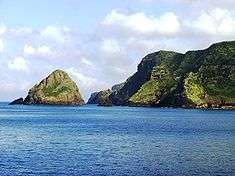Margarida Cabral de Melo
| Margarida Luísa Cabral de Melo | |
|---|---|
| Fidalga of the Royal House of Portugal.[1] | |
| Noble family | Cabral-Melo Coutinho |
| Born |
1570 Azores, Kingdom of Portugal |
| Died |
1631 Buenos Aires, Viceroyalty of Peru |
| Religion | Roman Catholic |
Margarida Cabral de Melo (1570–1631) was a Portuguese noble lady. In 1599 she settled with her husband and children in Buenos Aires.[2] She was one of the most powerful women in the Río de la Plata, in the early 17th century, owns of luxury homes, farms and vineyards.[3]
Biography
Margarida was born in Santa Maria Island, the daughter of Matias Nunes Cabral and Maria Simões de Melo.[4] She and her husband Amador Vaz de Alpoim, sons and sister Inês Nunes Cabral (wife of Gil Gonçalves de Moura), arrived to Buenos Aires from Rio de Janeiro, where they had lived for five years.[5]
When her husband died in 1617, Margarida inherited the ranch in the town of Luján. The ranch was administered by his son Manuel Cabral de Alpoim, an expert rider, Lieutenant Governor of Corrientes. Margarida possessed one of the most luxurious houses in the city, with mahogany furniture, carved silverware, tapestry and among its jewelery, a gold parrot.[6]
Ancestors and descendants
His ancestors belonged to almost all European royal houses, Margarita Cabral de Melo and his sister Inés Núñez Cabral were descendants of Mem Soares de Melo and Nuno Velho Cabral, nephew of Gonçalo Velho Cabral.[7] Other ancestors include Álvaro Martins Homem 3°Captain of Praia,[8] and Beatriz de Noronha,[9] maternal granddaughter of João Fernandes de Andrade.
The family of Francisco de Melo Coutinho, (ancestor of Margarida and Inês),[10] were direct descendants of the same King of Portugal Afonso III and his Mistress Madragana.[11]
Margarida and Inês Cabral de Melo were also descendants of the noble House of Guzman, through of Sancha Pérez de Guzmán, wife of Gonçalo Anes de Briteiros.[12]
With their respective husbands, the two sisters formed one of the most important families in the Rio de la Plata, and are the ancestors of several personalities as Juan Miguel de Esparza, José Gervasio Artigas,[13] Domingo French,[14] and Jorge Luis Borges, descendant of Ines.[15]
The Governor of Buenos Aires Juan Manuel de Rosas,[16] and Justo José de Urquiza, first President of the Argentine Confederation, were descendants of this family.[17]
References
- ↑ Studies in Genealogy and Family History in Tribute to Charles Evans on the Occasion of His Eightieth Birthday, Charles F. H. Evans
- ↑ Los portugueses en Buenos Aires (siglo XVII), Tipografía de Archivos, 1931
- ↑ Patricios correntinos: biografías, Volumen 1, Miguel Fernando González Azcoaga
- ↑ Revista patriótica del pasado argentino, Volumen 1, Impr. Europea, 1888
- ↑ Historiografía rioplatense, Volumen 6, Instituto Bibliográfico Antonio Zinny., 2002
- ↑ Boletín de la Academia Nacional de la Historia. Academia Nacional de la Historia (Argentina).
- ↑ Revista del Centro de Estudios Genealógicos de Buenos Aires Issue 1. Centro de Estudios Genealógicos de Buenos Aires.
- ↑ Historia Genealógica Argentina, Emecé, 01/01/1999
- ↑ Arquivos da Universidade de Lisboa, Volume 4. A Universidade, 1917.
- ↑ Génesis de la familia uruguaya: los habitantes de Montevideo en sus primeros 40 años, filiaciones, ascendencias, entronques, descendencias, Volume 4. Juan Alejandro Apolant.
- ↑ Actas, Volumen 2, Facultad de Filosofia y Letras, Universidad Nacional de Cuyo Centro Universitario, 1992
- ↑ Revista del Instituto de Estudios Genealógicos del Uruguay. El Instituto, 1988.
- ↑ Revista do Instituto Historico e Geografico do Rio Grande do Sul, Issues 124-127, Instituto Histórico e Geográfico do Rio Grande do Sul, Porto Alegre, Brazil
- ↑ Genealogía, hombres de mayo. Instituto Argentino de Ciencias Genealógicas.
- ↑ Oeuvres complètes, Volume 1, by Jorge Luis Borges, Jean-Pierre Bernès
- ↑ Congreso Internacional de Historia de América: actas / Academia Nacional de la Historia, Part 6. La Academia, 1966.
- ↑ Historia Genealógica Argentina. Narciso Binayán.
External links
- Genealogía Familiar
- Nobiliário de familias de Portugal (CABRAES)
- Nobiliário de familias de Portugal (COUTINHOS)
- Nobiliário de familias de Portugal (MELLOS)
